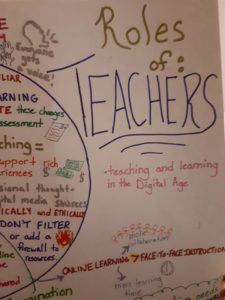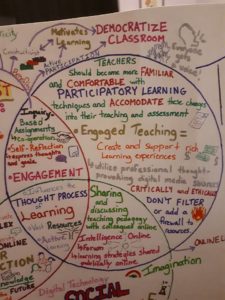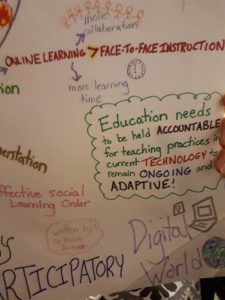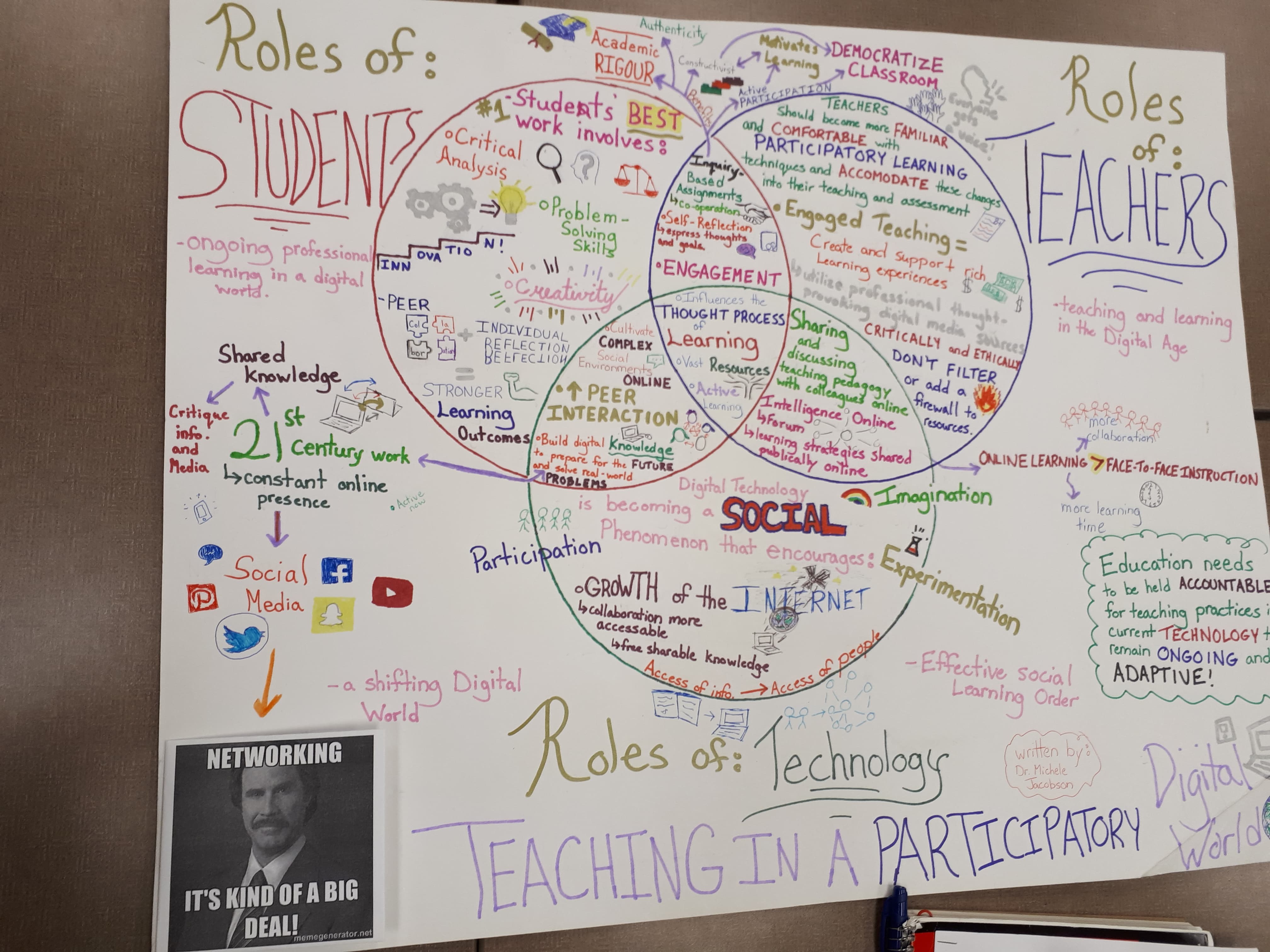Here we go again! My second multimedia assignment may lack sticky notes, but it still maintains an ample amount of colour and creativity. This time around I created a Venn diagram because Dr. Jacobson’s article, ‘Teaching in a Participatory Digital World‘, explains how both students and teachers utilize technology to motivate and adapt their ongoing learning experiences in the classroom. Since I already made a sketch note with my first multimedia assignment, I figured a Venn diagram would be the next best thing because it visually represents how students and teachers collaborate with each other and/or technology to benefit their educational lives. Each circle represents the roles of what students, teachers, and technology contribute and are expected of in the participatory digital learning world.
While I found this article to be a bit repetitive, I used that as inspiration to create the Venn diagram. Since so many of Dr. Jacobson’s ideas and comments were similar to each other or inter-connected, I used that to my advantage. Personally, I’m more of a pencil and paper kind of person, but I can definitely see the benefit of incorporating digital media in the classroom. There are so many fantastic resources and teaching tools online that can be used to really enhance the classroom learning environment. As teachers-in-training, it’s important to pay attention to this quote, “we cannot shut down the education system while teachers retool their practices and jurisdictions bring technological infrastructures up to standard.” With that being the case, it’s a great idea to start exploring online teaching forums and resources now to be prepared before we become permanent educators. However, my only concern regarding digital learning is the legitimacy of knowledge and information being shared. I’m surprised that Dr. Jacobsen barely touched upon teaching students how to critique digital learning practices; especially when “fake news” is extremely common in today’s world. Also, sometimes learning from your peers doesn’t always result in academic inquiry; especially if you and your peers are younger students. There are lot of online distractions that teachers must be aware of before allowing their students to utilize the digital world.
Considering this Venn diagram is hand-written, I still wanted to incorporate the participatory aspect of the article using online sources. Therefore, I created a Facebook group called ‘Memes for Education’ and invited 13 of my friends to participate. Their goal was to react only using gifs or memes to my comments/quotes/questions I had from the article. I also included a few posts that had them communicate and react to each other’s comments and it turned out to be a hilarious and insightful project. I chose to film their responses because it will showcase the gifs and I cannot post the discussion without adding everyone in the class into the group. (A few videos posted below).
The most challenging part about this assignment was organizing the roles and connections stated throughout the article and where (and how) they fit on the diagram. I didn’t have as much space as my previous sketch note so I had to condense my summaries while making sure I still got the point across. I also had to make sure I kept this neat, yet still appealing to look at. The information outside of the diagram represents some of the benefits and skills you’ll learn/need after participating in a digital learning environment.
Overall, I really enjoyed this article and believes it advocates for digital learning practices in a positive way. I think it’s important for students and teachers to stay up to date with real world situations and technical advancements. Learning about and utilizing them in an education setting is a great (and safe) place to start in the ongoing learning process.
Left side:

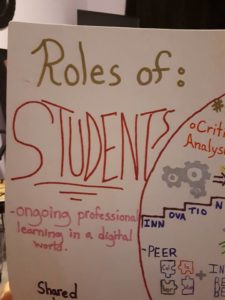
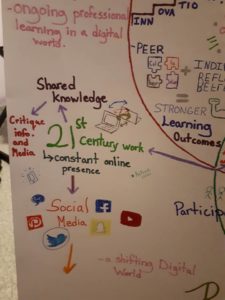
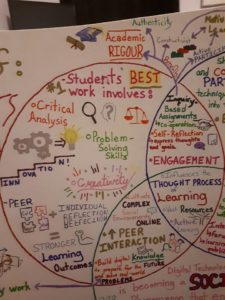


Bottom and connections:


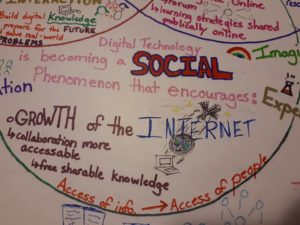
 <— Tech and students
<— Tech and students <—-tech and teachers
<—-tech and teachers 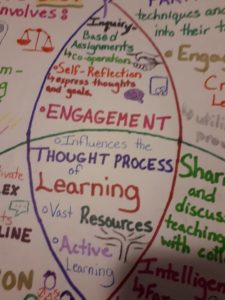 <– all three
<– all three
Right:
